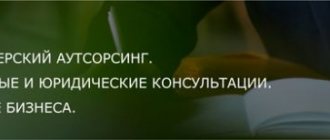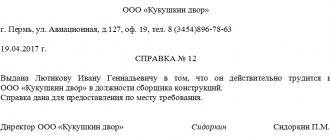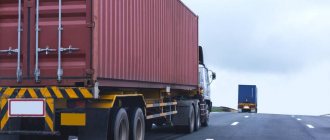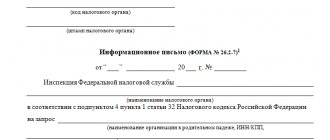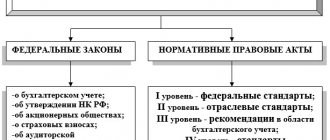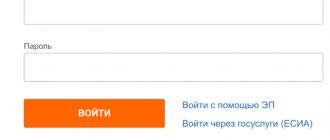The Federal Tax Service is automating some of its operations. One of the means of such automation is the computer program ASK NDS-2 and its improvement, its “superstructure” Risk management system RMS ASK NDS-2. The first version of ASK VAT was launched in 2013, the second - in 2015. RMS ASK VAT-2 appeared in the summer of 2021. During this time, the system managed to turn into a real nightmare for VAT taxpayers.
; Why was the risk management system RMS ASK NDS-2 created? To combat tax violations, to control the completeness of VAT receipts into the budget. Also, so that companies cannot illegally refund VAT. But not everything is so simple.
Interesting fact: the amount of illegal VAT refunds has decreased by almost 2 times, and this is the result of the action of ASK VAT-2. This was stated by the head of the Office of Desk Control of the Federal Tax Service, Dmitry Satin.
SUR ASK VAT-2 is the latest version of the program at the moment. It is this version that distributes taxpayers into 3 risk groups, which will be discussed below. Earlier versions are not able to distribute taxpayers into groups. Let's figure out how this system works.
How does SUR ASK VAT-2 work?
It’s quite simple: when a VAT payer company submits tax reports, SUR-ASK VAT-2 compares the data from these reports with information from supplier companies and clients of the VAT payer company. The system sees the entire chain of movement of goods and services from one company to another and compares the information received from these companies. Purchases and sales are reflected from suppliers and customers of that firm. And if there is a “gap” somewhere, SUR ASK VAT-2 instantly signals this.
SUR ASK VAT-2 does in minutes what inspectors previously spent many months doing. All information is now at your fingertips.
Interesting fact: over the 11 months of 2021, the Federal Tax Service collected 2.4 trillion rubles in VAT. This is 10% more than in the same period in 2015. This is partly associated with the ASK NDS-2 RMS system.
The best hits of Misha Zh.: ASK VAT, AIS and why the tax office won’t get to you
Misha Zhukhovitsky has sketched a new hit on a topic that worries everyone - taxes and what and how the tax office sees in reality in your office. = = = = =
About the crookedness of the tax service. A look from the inside.
One of the largest regional cities in Russia. A local high-ranking tax official is jumping across the stage. Business representatives are in the hall. The taxman, with shining eyes, says that the tax office knows everything about everyone. The Great ASK VAT is the all-seeing eye. And now (or very, very soon) ASK VAT will instantly reconcile invoices and amounts that go through bank accounts. As soon as an employee presses a button, he instantly sees a complete map of counterparties. With all the sins. And then there will be fiscal punishment. Perhaps even criminal. And no one will hide.
The show is great, the people are watching. This kind of window dressing is happening in all regions. But it has a weak connection with current reality. The fact is that almost no information about the technical part of the work of the Federal Tax Service comes out. Tax officials guard the secret; it is to their advantage to create fog. And all sorts of information businessmen on taxes broadcast only rumors; most of them have never even seen tax software.
I’ll briefly talk about the glitches of ASK VAT and AIS. And why will VAT be a mess for a long time?
— Of the 150 thousand tax officers in the country, 15 thousand deal with VAT. Of these, 90% pass around papers and don’t even understand what they’re talking about. 1500 people remain. All over Russia. For all regions. If you think about it, this is quite a bit. For all taxpayers-legal entities. That is, there is a physical limitation that rests on people.
— Unloading the ASK VAT tree of the 5-6th generation with a small number of counterparties physically takes 40-50 minutes. View one legal entity. If the tree is highly branched, the clock is already counting. In parallel with this, you can’t do anything else on the computer. This is not a passive background task that you turn on and go. It turns out that an employee can monitor a limited number of circuits per day.
— Unloading the ASK VAT tree is just an option in the program. The program itself, AIS Tax 3, through which the upload occurs, is an incredibly buggy thing . Sometimes it is cut down throughout Russia. It happens that AIS works only a few hours a day. Between all inspections in Russia, by region, there is a schedule for switching on AIS Tax-3. Very similar to the water shutdown schedule in the city. Today one area is being washed with hot water. Tomorrow is different. So it is here. All of Russia is divided into time slots when access to AIS is provided. Even with all the desire of tax officials to work more, overtime, they simply cannot: access is cut off at a certain time.
— Competence of employees and their number . Earlier I wrote about the number of employees in the Federal Tax Service. And there is also such an indicator as the number of employees by region who have access to AIS. Chukotka, Jewish Autonomous Okrug, Ingushetia and five other regions where less than 250 employees have access to AIS. Of these, as I have already said, 90% do not understand what is happening . Now many have thought of creating intermediate technical units in such regions. I am sure that in many regions now over half of the registrations of legal entities are for technical technicalities related to VAT. Simply because they cannot be tracked locally due to the small number of employees.
— The level of access to AIS depends on the employee’s position. Like at McDonald's: the cashier cannot cancel a pie from your order until a senior person comes over with an access card. An ordinary inspector has access to approximately 20 branches. The head of the department has 50 branches of AIS. Why is that? Probably so that information is not leaked. Inspectors cannot carry out the work at full capacity; on many issues, access must be requested from management. And the bosses are always busy.
- Let's move on to the most important point. That the movement of funds on accounts can be seen online and the VAT ASK will automatically reconcile with invoices. No, it will not. I'll explain why. Money movements are loaded by banks. In AIS. Each bank does this in its own way, chaotically. Moreover, large banks, whose BICs are divided by region, upload statements as they wish. Moscow can load it in a month. And the Ural region - a year later and having lost 80% of the data. Currently, monitoring statements through AIS is a waste of time for tax officials. Most of the data is simply not there. The data appears with a huge delay. Often, for 4-5 months. Sometimes they don't appear at all. Every tax specialist who deals with VAT knows about this. And each of them is forced to make requests to the banks where accounts are opened. And this is also time. In a day, a tax specialist can send out, well, 15 requests. This is if he doesn't do anything else . Therefore, in order to first submit a request, he must look at the list of accounts of the organization. Each request must be completed correctly. Send. All this time.
As a result, it will not be possible to improve any one module of the AIS. Like, we’ll now rewrite the ASK VAT and that’s it. The entire AIS needs to be sawed down. And make sure that banks report on time and in full.
In my opinion, reconciliation of transactions on an account and on invoices is possible only if there is a total replacement of all tax software with a new one. Synchronously with the change of equipment to more modern ones. And along with training current and new staff.
— Employees receive pennies . In Moscow the salary is 28-30 thousand, in the regions it is less. People who have to catch thefts are forced to worry about their survival. Their minds are occupied with other things; the issue of replenishing the country’s budget is secondary for them. Inspectors need to raise their salaries.
- The technology is old . The Federal Tax Service in the regions and the Federal Tax Service in the cities are still somehow tolerant. And the inter-district inspections are absolutely sad there. But even in management, on relatively new system units, the system crashes if a legal entity has a giant tree of counterparties. In territorial areas, it is generally impossible to see such a tree.
Therefore, small and medium-sized businesses can sleep peacefully for a long time to come. Provided it works properly. Draining VAT according to the system: “3 benches in a row, at the end there is a throw” no longer works. You need to work beautifully and not skimp on a couple of percent for quality. Otherwise, additional charges for the full amount will arrive later.
Local tax officials already know everything about big business. Moreover, for city-forming businesses, such as metallurgical companies, the tax office, in fact, acts as an external auditor. There is simply no one else to do them in the city; there are no other VAT payers there. Therefore, the big guy goes through check after check, which merge into one big, endless check. Such a system can be mutually beneficial. Tax officials in the regions in terms of real income are the local elite, at the level of judges and the FSB. We are, of course, talking about management, not ordinary employees.
The conclusions are as follows: - The tax office doesn’t see anything online now. And he won't be seen for a long time. — On issues of “paper VAT” you need to work with those who have a good understanding of the technical part of the Federal Tax Service from the inside.
What are the results used for?
1. To determine which companies are claiming VAT refunds, you need to pay special attention. Previously, in order to identify “dubious” VAT refund applications, it was necessary to sift through a lot of documents, but the ASK VAT-2 RMS does everything very quickly and in an automated mode.
2. If there are discrepancies in the tax returns of the “chain” of suppliers and buyers, then the ASK VAT-2 RMS is used to determine what caused these discrepancies. Tax officials begin to look for a beneficiary in the chain - a company that somehow makes illegal tax profits. And then there will be a desk audit, and then there will be an almost 100% probability of additional tax charges.
It should also be noted that when a “gap” is discovered in some chain - that is, someone did not reflect something in the declaration, some numbers did not match, then the Federal Tax Service begins to “shake” the entire chain. And first of all, they are interested in the fact that they can be charged more taxes and actually collect them.
How do you fill out section 3 of the VAT return?
The general principles of how to fill out section 3 and the VAT return as a whole are spelled out in the manner approved by our already mentioned order No. MMV-7-3 / [email protected]
Figures and other information in the reporting are transferred from accounting registers, both accounting and tax.
- To fill out page 010 gr. 3 takes the quarterly total credit turnover of accounts 90 “Revenue” and 91 in terms of income from transactions subject to VAT, and column 5 - the total debit turnover of accounts 90 “VAT” and 91 “VAT”.
- Page 070 gr. 5 is equal to the amount of VAT reflected for the quarter in the debit of account 76 “VAT on advances received.”
- Page 090 gr. 5 is the amount of tax received from the debit of account 76 “VAT on advances issued” for the tax period.
- Page 118 is the total credit turnover of account 68 “VAT”. You can check this figure with the final VAT amount in the sales book. They must be identical.
- You need to fill out page 120 with the figure corresponding to the credit turnover of account 19 for the quarter.
- On page 130 the credit turnover of account 76 “VAT on advances issued” will be displayed.
- The value on page 170 corresponds to the credit turnover of account 76 “VAT on advances received.”
- The indicator on page 190 is equal to the amount of the debit turnover of account 68 “VAT” (minus the VAT transferred to the treasury for the previous period). This line should be equal to the total VAT amount in the purchase book.
ConsultantPlus experts spoke about the nuances of filling out each line of the VAT return. To do everything correctly, get trial access to the system and go to the Ready solution. It's free.
A sample of filling out section 3 can be downloaded from the link below.
conclusions
Further more.
The Federal Tax Service is not going to stop there. There are plans to synchronize the program with the information databases of customs, the Central Bank and Rosfinmonitoring. This means that the system will be even more vigilant, corrosive and picky. 9 out of 10 tax charges are based on the fact that the company cooperates with unscrupulous contractors. Although the company's management may not know that something is wrong with partner companies.
Everyone knows that prevention is easier and cheaper than treatment. It’s the same in business - it’s better to contact an experienced tax lawyer so that he can check your counterparties and the correct operation of your own company, than to look for a defender when the Federal Tax Service already has questions.
Times have changed. The Federal Tax Service has armed itself with smart technologies. And you need to arm yourself. The experience and knowledge of a good tax lawyer is your best weapon.
Extraterritorial checks
What is this? Inspections of business entities conducted not by the “native” tax inspectorate, but by colleagues from other regions and even cities.
Who is at risk? Almost everyone who will be subject to inspections.
The idea is to exclude the slightest possibility of collusion between representatives of the organization (IP) and the tax inspectorate. It’s no secret that businessmen know their inspectors and often try to come to an agreement. If the inspection is carried out by an unfamiliar specialist, the possibility of this is reduced to a minimum.
The Federal Tax Service applies a similar approach to checking the correct use of cash register equipment by business entities.
Where can I download PIK VAT for free?
“VAT Refund: Taxpayer” are available for download here .
In addition, many service programs offer special settings for integrating information from the accounting databases used into the “VAT Refund: Taxpayer” complex. This reduces the work of the accountant, since the information does not need to be entered twice - it is enough to simply download the information available in your accounting database for transmission to the tax authorities.
Consequences for Poker Players
It would seem, why does the average poker player care about reconciling sales and purchase books if the main goal is to fight the shadow economy and fictitious companies? Alas, from the point of view of the legislator, income from honest grinding or winning a large MTT contains signs of money laundering and other illegal transactions.
In the recent past, the careers of the vast majority of professional poker players from Russia began with no deposit bonuses from poker schools and affiliates. Occasionally - just from a minimum deposit in a poker room. The player gradually trained, grew in limits, and followed advice on bankroll management. In short, he was the epitome of poker discipline and dedication. Let’s roughly assume that in two years he heroically covered the road from nl2 to nl200 and built himself a four- or five-digit bankroll. Then he decided to taste the result of his many months of work: he ordered a cashout and received his money. Previously, amounts up to 600 thousand rubles could be withdrawn without any problems.
In 2021 the situation is not so rosy. To make a deposit and link the payment method to the poker room, you need to complete a real quest. Moreover, every year the level of complexity in it becomes higher and higher. The conclusion is also fraught with problems - this is where ASK VAT-3 comes into play. Since 2021, it has a database of banks at its disposal. The likelihood that your poker profit will be considered questionable by the automated system is quite high. The prospect of communicating with the competent authorities after an ordinary cashout is not pleasant news.
Liability for non-payment of taxes in accordance with Article 122 of the Tax Code of the Russian Federation ranges from 20% to 40% of the unpaid tax amount. The amount depends on the intentionality of the act committed, so they are more likely to demand 40% - it is difficult to meet a poker player who has never thought about or heard about the obligation of individuals to pay taxes. The additional burden in the form of taxes and fines for arrears look unpleasant, but everything is not too threatening. But the sanctions of the Criminal Code of the Russian Federation for tax evasion are much more convincing:
- A fine of 100 to 300 thousand rubles or in the amount of salary / other source of income for one to two years;
- Forced labor for up to a year;
- Arrest for up to six months;
- Imprisonment for up to a year.
If you want to be recognized as a beneficiary
Unfortunately, everyone, including those who do not use any schemes, has the risk of falling into the attention zone of the VAT Control system.
If you are one of them, then you yourself will have to defend your interests - you rightfully have a chance to challenge the claims of the tax authorities.
Be sure to meet all inspection requirements. But know when to stop and try not to give too much information. Remember, it will all go into the database. Pay special attention to the reality of your transactions.
Start collecting evidence of the reality of the transaction and the legality of your actions not at the time of scheduling an on-site inspection, but when you receive the first VAT requirement from the inspectorate.
How to reduce risks at each stage of working with VAT? The main thing is to prepare the declaration correctly. Avoid errors and discrepancies in invoices. Respond quickly to inspection requests.
Liquidation as a reason for verification
Improving control is aimed at identifying potential beneficiaries who are found to be using tax schemes.
And if the beneficiary has already been identified and a procedure for voluntary liquidation or exclusion from the Unified State Register of Legal Entities is suddenly initiated against him, then this becomes the reason for making a decision to conduct an on-site tax audit.
If the counterparty is liquidated or expelled from the Unified State Register of Legal Entities, then during inspections questions may also arise for completely “white” companies that collaborated with him.
Save time on assessing the reliability of the company and reduce commercial and tax risks of the transaction.
To learn more
Imagine the situation: three years ago your counterparty was conducting business according to the letter of the law, but now it has been liquidated, and you unexpectedly receive demands on this company - the tax authorities suspect that some kind of scheme took place and through liquidation your counterparty covered its tracks.
Direction of requirements
At the initial stage of inspections, tax authorities send demands. This is the first step that allows you to feel the chain and the “tree of connections”. Tax officials are still only collecting information.
It is highly undesirable to ignore the requirements. But at the same time, it is important to analyze them, not forgetting about your interests as a taxpayer.
Call for commission
This measure is necessary in order to personally verify how true the suspicions are that you are a beneficiary. At the same time, the Tax Code does not provide for any commissions. But there are interrogations that can be conducted as part of on-site or desk checks.
Nowadays, taxpayers are often called even to the wrong inspection departments where they are registered. And this is due to the fact that any inspections, including those that have a “bursting device” on their books, can work on ruptures.
On the one hand, this approach looks strange; there is a temptation to ignore such requirements of the tax authorities. On the other hand, the sooner you engage in the process of interaction with tax authorities, providing evidence and defending yourself at the stage of suspicion, the less likely it is that claims will be made against you as part of on-site audits.
Sending information messages
The messages inform about the identification of schemes, in them the taxpayer is asked to submit an updated declaration and pay additionally to the budget.
In some cases, it is better for the taxpayer to state his position in writing and provide the tax authorities with the available evidence.
Confirmation of tax rate "0"
The tax office has repeatedly emphasized in its letters that entering information into the “VAT Refund: Taxpayer” software package is required, first of all, to confirm the 0% rate when exporting products.
What is the procedure for accounting and refunding VAT when exporting, find out here.
Thus, in accordance with Article 165 of the Tax Code of the Russian Federation, in order to confirm the right to apply the “0” rate, the taxpayer is required to provide the tax office with:
- contract or extracts from it;
- a customs declaration with marks on the cargo crossing the border (or a register of customs declarations);
- copies of shipping documents for each contract.
When providing the listed papers, the tax office may selectively request documents of interest to it. Documents (and/or their copies) can be provided on paper or electronically via TKS if they comply with the approved format.
See also: “What is the procedure for refunding VAT at a rate of 0% (receiving confirmation)?”
